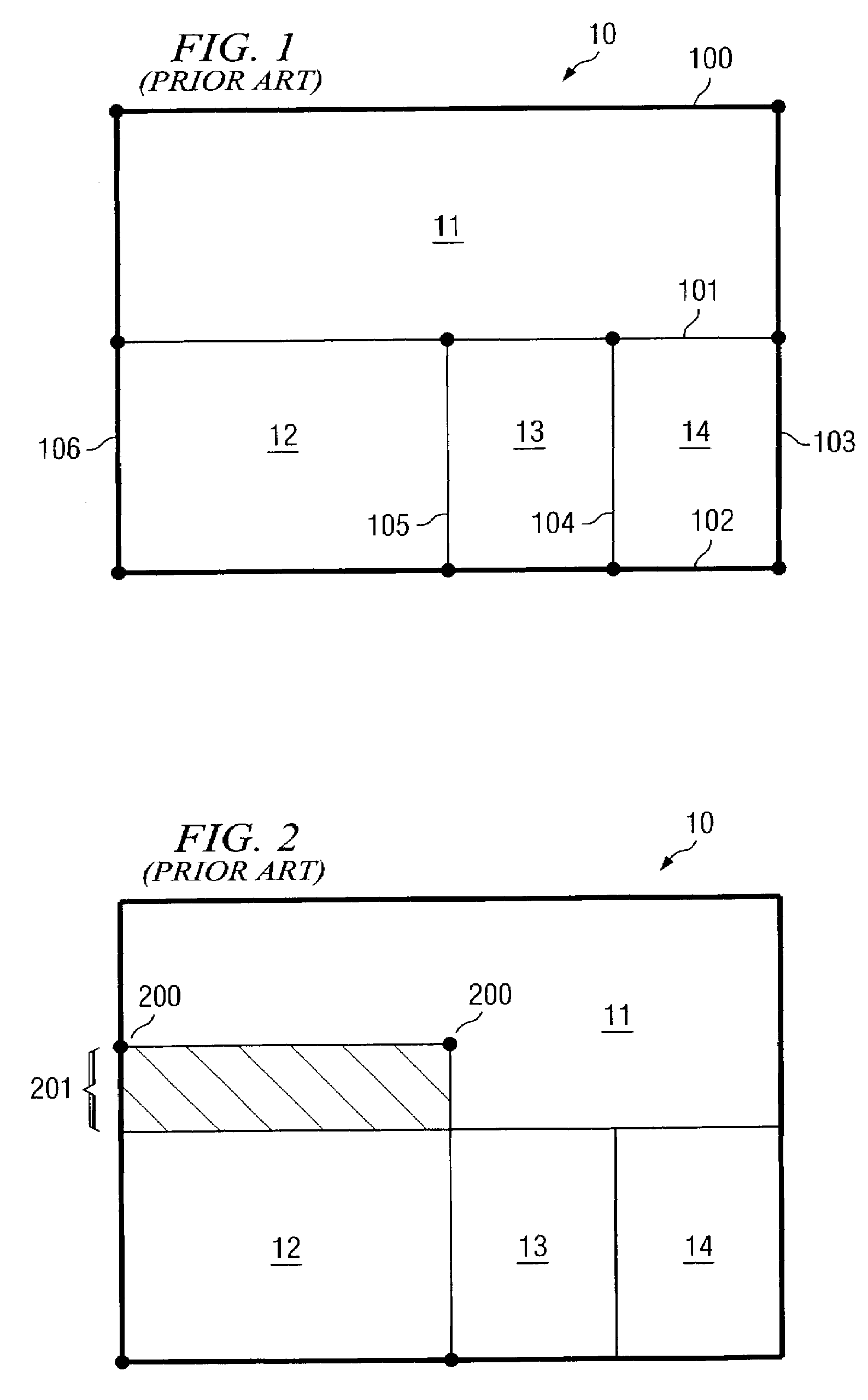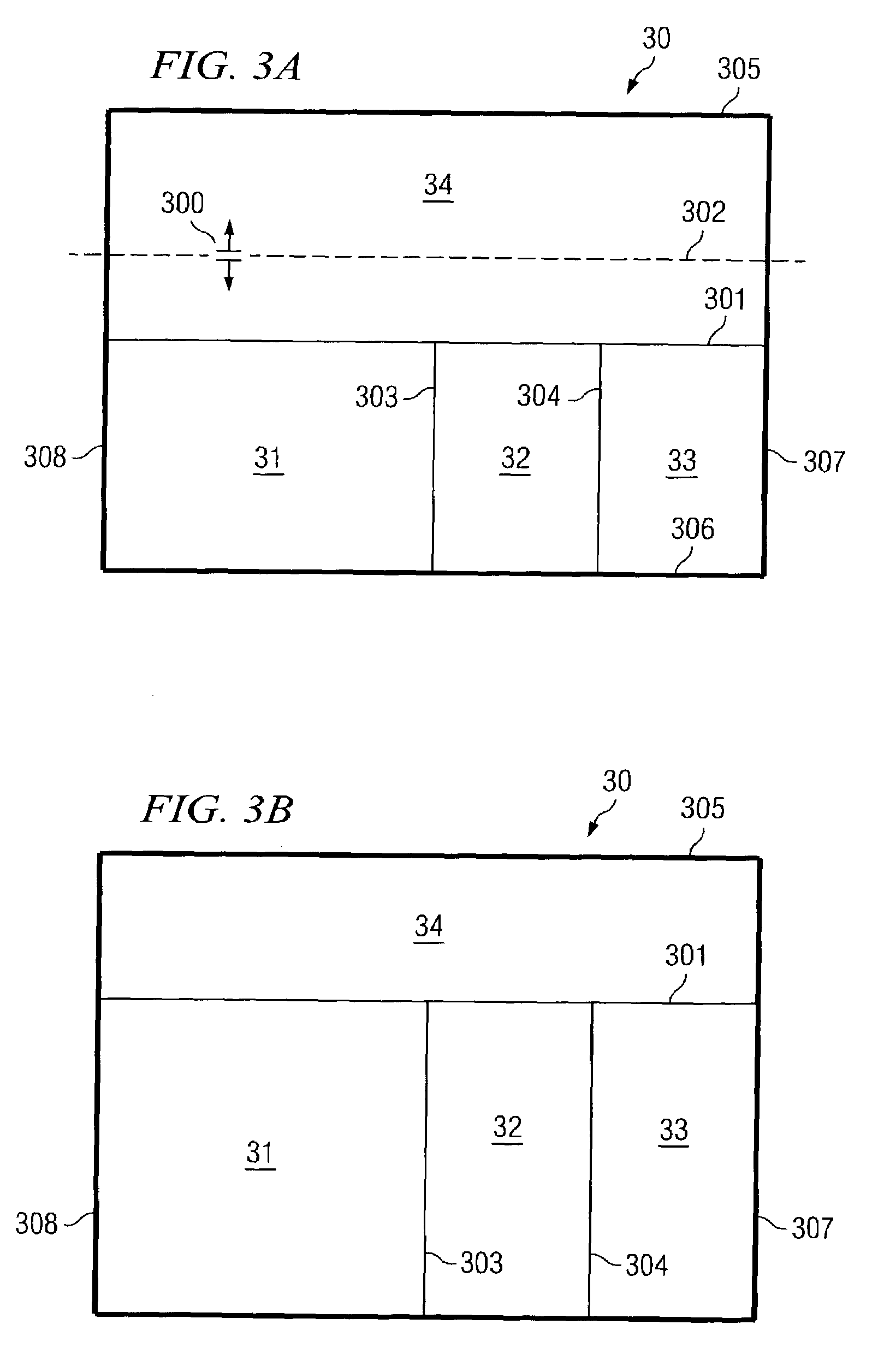Interactive user interface guides
a user interface and interface technology, applied in the field of graphic editing applications, can solve the problems of difficulty in modifying the design or functionality or selected portions of the web page, and ineffective ways, so as to save considerable complexity and facilitate modification
- Summary
- Abstract
- Description
- Claims
- Application Information
AI Technical Summary
Benefits of technology
Problems solved by technology
Method used
Image
Examples
Embodiment Construction
[0024]FIG. 3A is an illustration of graphics document 30 divided with slices 31–34 and showing feedback slice guide 302. Drag cursor 300 has been dragged up to feedback slice guide 302 from slice boundary 301. As feedback slice guide 302 is dragged, each of slices 31–33 with vertical slice boundaries 303 and 304 are shown potentially increased in size while slice 34 is shown potentially decreased in size. This simultaneous operation occurs because each of slices 31–34 share slice boundary 301. The results of the inclusion of the functionality would allow for multiple slices, four in this example, to be modified with one movement.
[0025]FIG. 3B is an illustration of graphics document 30 in which slices 31–34 have been re-sized according to the dragging of feedback slice guide 302 (FIG. 3A). Graphics document 30 shows slices 31–33, bound by slice boundaries 303 and 304, have been increased in size, while slice 34 has been decreased in size.
[0026]FIG. 4A is an illustration of graphics d...
PUM
 Login to View More
Login to View More Abstract
Description
Claims
Application Information
 Login to View More
Login to View More - R&D
- Intellectual Property
- Life Sciences
- Materials
- Tech Scout
- Unparalleled Data Quality
- Higher Quality Content
- 60% Fewer Hallucinations
Browse by: Latest US Patents, China's latest patents, Technical Efficacy Thesaurus, Application Domain, Technology Topic, Popular Technical Reports.
© 2025 PatSnap. All rights reserved.Legal|Privacy policy|Modern Slavery Act Transparency Statement|Sitemap|About US| Contact US: help@patsnap.com



